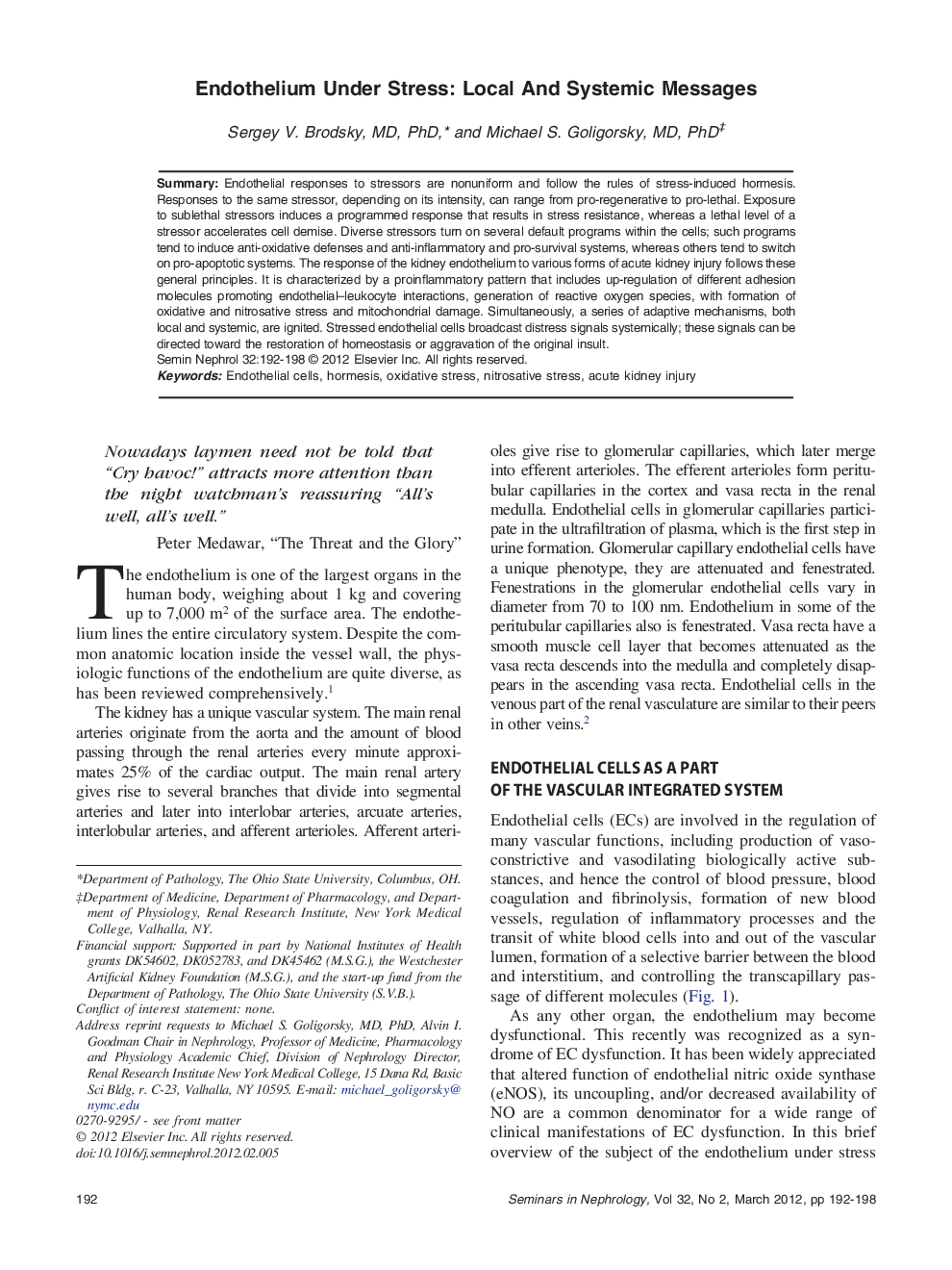| Article ID | Journal | Published Year | Pages | File Type |
|---|---|---|---|---|
| 3896528 | Seminars in Nephrology | 2012 | 7 Pages |
Abstract
Endothelial responses to stressors are nonuniform and follow the rules of stress-induced hormesis. Responses to the same stressor, depending on its intensity, can range from pro-regenerative to pro-lethal. Exposure to sublethal stressors induces a programmed response that results in stress resistance, whereas a lethal level of a stressor accelerates cell demise. Diverse stressors turn on several default programs within the cells; such programs tend to induce anti-oxidative defenses and anti-inflammatory and pro-survival systems, whereas others tend to switch on pro-apoptotic systems. The response of the kidney endothelium to various forms of acute kidney injury follows these general principles. It is characterized by a proinflammatory pattern that includes up-regulation of different adhesion molecules promoting endothelial-leukocyte interactions, generation of reactive oxygen species, with formation of oxidative and nitrosative stress and mitochondrial damage. Simultaneously, a series of adaptive mechanisms, both local and systemic, are ignited. Stressed endothelial cells broadcast distress signals systemically; these signals can be directed toward the restoration of homeostasis or aggravation of the original insult.
Related Topics
Health Sciences
Medicine and Dentistry
Nephrology
Authors
Sergey V. MD, PhD, Michael S. MD, PhD,
